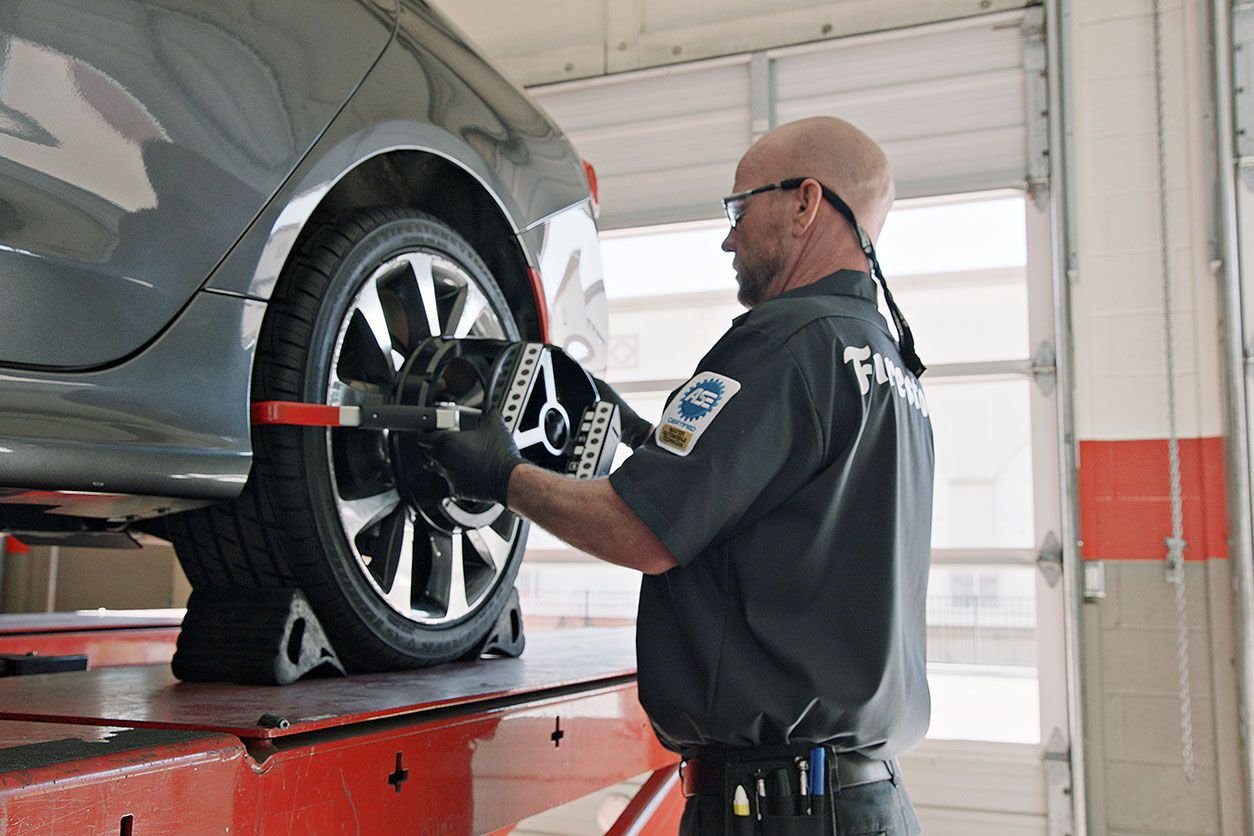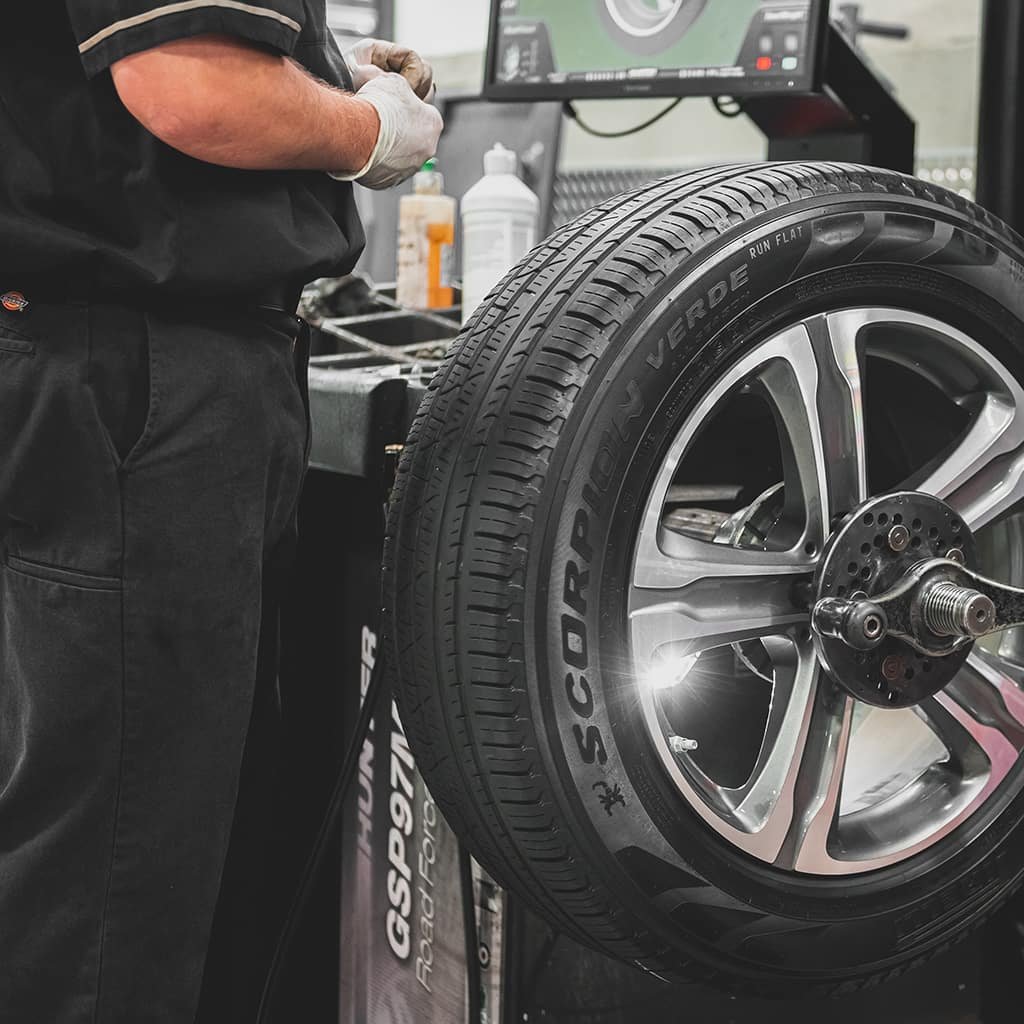Learn why tire balancing is crucial for your vehicle. Discover symptoms of unbalanced tires, balancing techniques, and cost factors. Keep your ride smooth!
Tire balancing is very important for your car. If your tires are not balanced, you might feel vibrations or see uneven tire wear. You may wonder what tire balancing is and why it matters. In this article, we will talk about what tire balancing is and how to spot unbalanced tires. We will also explain how to balance your tires, choose the right balancing service, and advanced balancing techniques. By the end, you’ll understand why keeping your tires balanced is so important for a smooth and safe drive.
What is Tire Balancing and Why is it Important?
Tire balancing is a crucial maintenance task that ensures your vehicle’s tires are evenly weighted. This process helps distribute weight around the tire and wheel assembly, which is essential for smooth vehicle operation. When tires are not properly balanced, they can cause vibrations and uneven wear, which affects overall driving comfort and safety.
How Tire Balancing Works: During tire balancing, a technician uses a special machine to identify any imbalances in the tire and wheel assembly. The machine then places small balancing weights on the rim to counteract these imbalances. This process ensures that the weight of the tire is evenly distributed, which is vital for smooth and safe driving.
Importance of Tire Balancing for Vehicle Performance: Properly balanced tires contribute to better vehicle handling, improved fuel efficiency, and extended tire life. Without balancing, tires can wear out unevenly, leading to more frequent replacements and potentially unsafe driving conditions.
Effects of Unbalanced Tires on Driving: Unbalanced tires often lead to noticeable vibrations in the steering wheel, floorboard, or seat. These vibrations are not just uncomfortable but can also affect your vehicle’s alignment and overall driving stability.
Symptoms of Unbalanced Tires
Recognizing the symptoms of unbalanced tires can help you address issues before they become major problems. Here are common signs:
- Vibration: One of the most common symptoms is a noticeable vibration in the steering wheel, which typically worsens at higher speeds.
- Uneven Tire Wear: Unbalanced tires often lead to uneven wear, which can reduce the lifespan of your tires.
- Handling Issues: You might experience handling problems, such as pulling to one side or a general feeling of instability while driving.
How to Balance Your Tires: A Step-by-Step Guide

Balancing your tires involves several key steps:
- Remove the Tire from the Vehicle: Start by safely lifting the vehicle and removing the tire.
- Mount the Tire on the Balancing Machine: Place the tire on a balancing machine, which will spin it and detect any imbalances.
- Adjust for Weight Distribution: The machine will indicate where to place balancing weights to correct any imbalances.
- Reinstall the Tire: Once balanced, reinstall the tire on your vehicle and ensure it is securely fastened.
DIY vs. Professional Tire Balancing: While DIY methods are available, professional tire balancing is often more accurate due to advanced equipment and expertise. A tire balancing service ensures that your tires are correctly balanced, contributing to better vehicle performance and safety.
Choosing the Right Tire Balancing Service
When selecting a tire balancing service, consider the following:
- What to Look for in a Balancing Service: Ensure the service uses modern equipment and has experienced technicians.
- Questions to Ask a Tire Balancing Technician: Inquire about their experience, the type of equipment used, and how they handle any issues.
- Comparing Costs and Services: Prices can vary, so compare costs and services offered by different providers.
- Finding a Reliable Service Near You: Look for reviews and recommendations to choose a reputable service provider.
The Role of Tire Balancing in Vehicle Maintenance

Incorporating tire balancing into your regular maintenance routine is essential for optimal vehicle performance:
- Integrating Tire Balancing into Regular Maintenance: Regular tire balancing should be part of your vehicle’s maintenance schedule, typically recommended every 6,000 to 8,000 miles.
- How Often Should You Balance Your Tires?: Regular balancing helps prevent issues like uneven wear and vibrations.
- Effects of Regular Balancing on Tire Lifespan: Consistent balancing extends tire life by ensuring even wear.
- Balancing in Relation to Other Maintenance Tasks: Tire balancing complements other maintenance tasks, such as alignment and rotation, for overall vehicle health.
Advanced Tire Balancing Techniques
Advanced techniques can address specific balancing needs:
- Dynamic vs. Static Balancing: Dynamic balancing is used for tires in motion, while static balancing is suitable for tires that are not rotating.
- Road-Force Balancing Explained: This method simulates road conditions to detect and correct imbalances that might not be apparent during static balancing.
- High-Speed Balancing Considerations: High-speed balancing is crucial for vehicles that operate at high speeds to ensure stability and performance.
- Precision and Calibration in Modern Balancing Machines: Modern machines offer precise calibration to ensure accurate results.
Cost Factors and Budgeting for Tire Balancing

Understanding the costs associated with tire balancing helps you budget effectively:
- Typical Costs for Tire Balancing Services: Prices can range depending on the type of service and location.
- Factors Affecting the Price of Tire Balancing: Factors include the complexity of the balancing process and the type of vehicle.
- Budgeting for Regular Maintenance: Plan for regular balancing as part of your vehicle maintenance budget.
- Cost vs. Benefit Analysis of Professional Balancing: Investing in professional balancing can save money in the long run by preventing costly tire replacements and repairs.
To maintain optimal vehicle performance and safety, regular tire balancing is essential. Properly balanced tires improve driving comfort, extend tire life, and ensure vehicle stability. Make tire balancing a regular part of your vehicle maintenance routine to avoid potential issues and ensure a smooth driving experience.
Conclusion: In summary, keeping your tires balanced is key for a smooth ride and safe driving. Regular balancing helps prevent vibrations, uneven wear, and extends tire life. If you found this information helpful, leave a comment, share this article, or explore more content on our site for further tips and advice.

FAQs about Tire Balancing
What is tire balancing and why is it necessary?
Tire balancing is a maintenance process that ensures your tires and wheels are evenly weighted. This is crucial for smooth driving and vehicle stability. Without proper balancing, you might experience vibrations, uneven tire wear, and handling problems. Balancing helps distribute the weight evenly, which can improve your vehicle’s performance and safety.
How do I know if my tires need balancing?
You may notice several signs that indicate your tires need balancing:
- Vibrations in the steering wheel, seat, or floorboard, especially at higher speeds.
- Uneven tire wear, which can be seen as bald spots or irregular patterns on the tires.
- Handling issues, such as pulling to one side or a feeling of instability.
Can I balance my tires myself, or should I go to a professional?
While there are DIY kits available for tire balancing, it is generally better to have a professional handle it. Professionals use specialized equipment to ensure accurate balancing. DIY methods may not be as precise and can lead to further issues if not done correctly. Professional balancing ensures your tires are properly aligned and weighted.

How often should I have my tires balanced?
It is recommended to have your tires balanced every 6,000 to 8,000 miles or when you notice signs of imbalance. Additionally, it’s a good idea to check your tire balance whenever you get new tires or after a major suspension repair. Regular balancing helps maintain optimal vehicle performance and prolongs tire life.
What is the cost of tire balancing?
The cost of tire balancing varies depending on your location and the service provider. On average, you can expect to pay between $15 to $50 per tire. Some auto shops may include balancing as part of a tire purchase or rotation service. Always check for any additional fees and compare prices to ensure you get a fair deal.